Embarking on a kayaking journey across the tranquil waters, one often seeks the serenity of nature and the thrill of exploration. For those drawn to the magnetic pull of the north, the adventure is as much about the destination as it is about the journey. A Kayaker Needs to Paddle North Across is not just a phrase, it’s a call to the wild, an invitation to embrace the unknown and to chart a course through the waters less traveled.
Paddling north requires more than just physical strength; it demands a keen understanding of navigation, an awareness of the environmental elements, and a preparedness for the unexpected. Whether you’re crossing a serene lake, a flowing river, or the vast expanse of the sea, the direction you take matters. It’s about setting a course that aligns with your goals, the geography, and the whims of the weather.
In this guide, we’ll navigate through the essentials of northern kayaking. From the basics of kayaking, preparing for your journey, to the challenges you might face, we’ll provide you with a comprehensive overview. Our aim is to equip you with the knowledge and confidence needed to answer the call of the north. So grab your paddle, secure your life jacket, and let’s set forth on an adventure that begins with a single stroke northward.
Table of Contents
Understanding the Basics of Kayaking
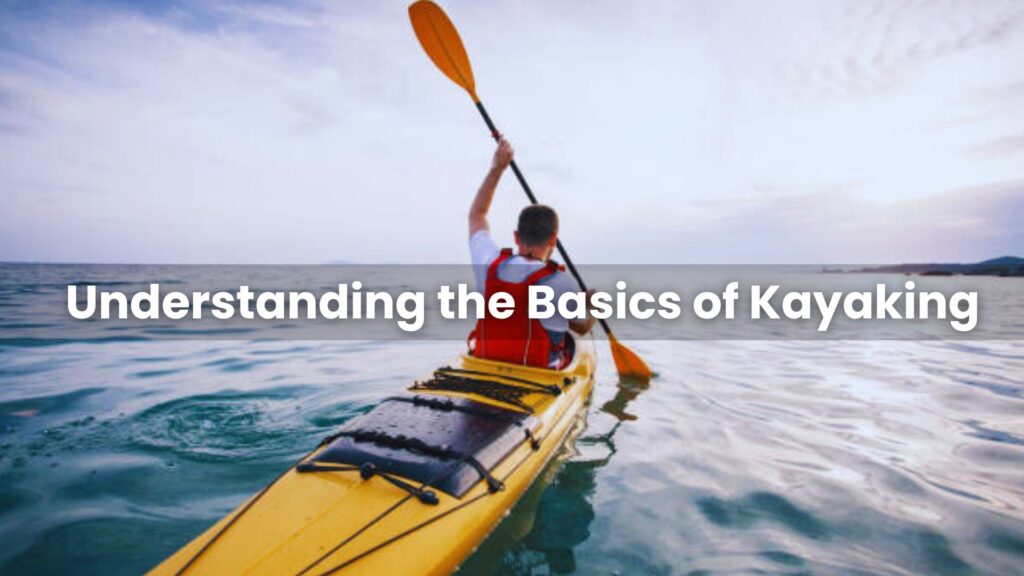
Kayaking is a versatile and exhilarating sport that connects you with nature and offers a unique perspective on the world from the water’s surface. Whether you’re gliding through calm lakes, navigating river rapids, or exploring coastal waters, the fundamentals of kayaking remain the same.
At its core, kayaking involves propelling a small, narrow watercraft using a double-bladed paddle. The kayaker sits facing forward, legs in front, using alternating side strokes to move through the water. This simple yet effective method of travel has been refined over centuries, evolving from the subsistence hunting craft of indigenous Arctic peoples to the recreational and competitive vessel we know today.
Choosing the Right Kayak: Selecting the right kayak is crucial for your comfort and safety. Kayaks come in various shapes and sizes, each designed for specific water conditions and activities. For instance, sea kayaks are typically longer and have more storage for long-distance journeys, while whitewater kayaks are shorter and more maneuverable for navigating rapids.
Essential Gear and Equipment: Equipping yourself with the proper gear is just as important as the kayak itself. A personal flotation device (PFD), also known as a life jacket, is mandatory for safety. Paddles, helmets, and spray skirts are also part of the essential kit, providing protection and aiding in the kayak’s maneuverability.
Basic Paddling Techniques: Mastering basic paddling techniques is fundamental to a successful kayaking experience. The forward stroke is the most common, used to propel the kayak forward, while the reverse stroke allows you to move backward. The sweep stroke helps you turn the kayak, and the draw stroke pulls you sideways. Each stroke requires a combination of upper body strength, coordination, and balance.
Safety and Navigation: Safety should always be a top priority. Before setting out, familiarize yourself with the kayak’s stability and practice capsizing and re-entry drills. Understanding how to read a compass and navigate using landmarks will ensure you can paddle north across your chosen body of water confidently and safely.
Preparing for Your Northern Journey
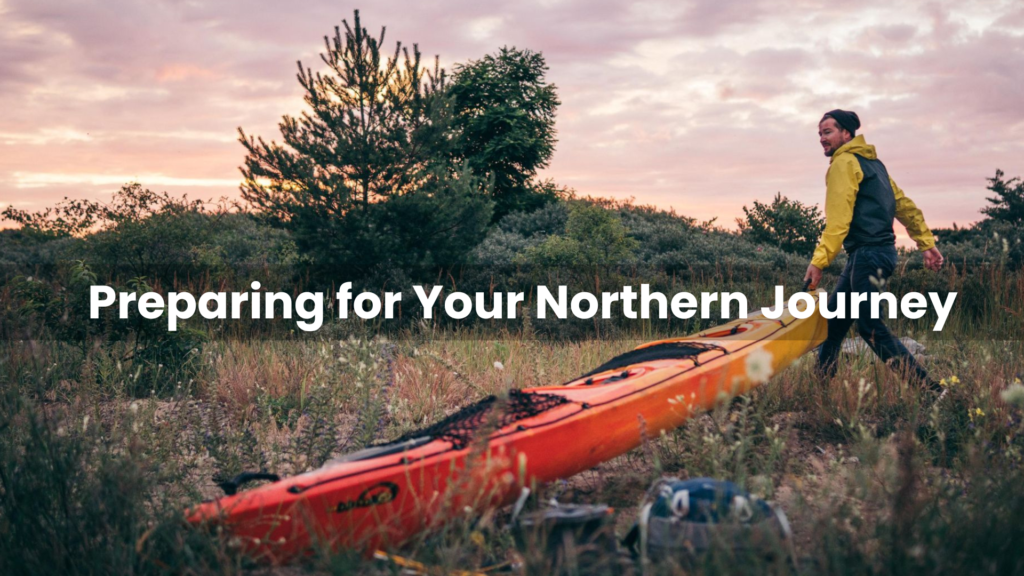
As you set your sights on the northern horizon, preparing for your journey is a pivotal step that can make the difference between a memorable adventure and a challenging ordeal. The key to a successful northern paddle lies in meticulous preparation and an understanding of the unique conditions you may encounter.
Planning Your Route: Begin by charting your course. Study maps and navigation charts of the area you intend to cross. Identify potential rest spots, hazards, and points of interest. Consider the distance and estimate how long it will take you to paddle, taking into account factors like rest breaks and the average speed you can maintain.
Weather Considerations: The weather can be unpredictable, especially in northern regions. Keep a close eye on weather forecasts and understand the implications of weather changes. Learn to read the sky and water for signs of impending weather shifts. This knowledge can be crucial for making timely decisions on the water.
Gathering Essential: Gear Your gear list should include navigation tools like a compass and waterproof maps, a sturdy and reliable kayak, a PFD, a helmet, and appropriate clothing for cold water immersion. Don’t forget to pack a repair kit, signaling devices, and a first-aid kit.
Safety and Skills Training: Before you embark, ensure you’re well-versed in self-rescue techniques and have practiced them in conditions similar to those you’ll face. Familiarize yourself with the local wildlife and how to handle encounters. Brush up on your paddling skills, focusing on efficiency and endurance.
Mental and Physical Preparation: Prepare your body with exercises that build strength and stamina. Equally important is mental preparation. Visualize your journey, anticipate challenges, and mentally rehearse your responses. This mental fortitude will serve you well when faced with the solitude and demands of paddling north.
Navigating the Waters: Paddling North Across
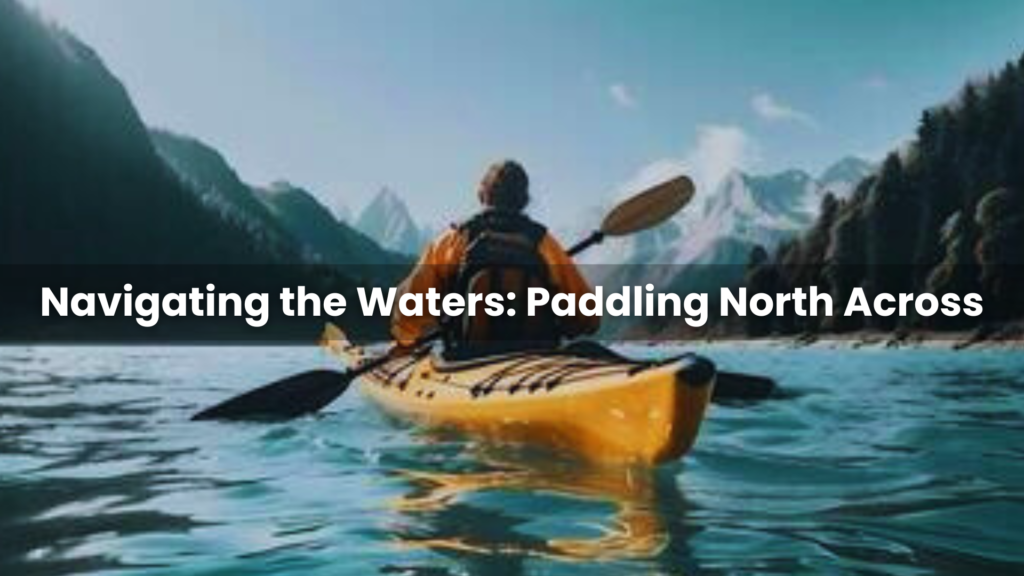
When the compass points north and the waters ahead call your name, navigating your kayak in the right direction is a skill that marries art with science. Paddling north across any body of water is a journey that begins with understanding the nuances of navigation and ends with the satisfaction of reaching your destination.
Role of Navigation in Kayaking: Navigation is the backbone of any successful kayaking trip, especially when your path is directed northward. It involves more than just knowing your start and end points; it’s about understanding the journey in between. This includes reading the water currents, recognizing landmarks, and being able to adjust your course as needed.
Using a Compass and Map: A compass is your steadfast ally in the quest to paddle north. It helps you maintain your bearing, even when the shore is out of sight. Pairing a compass with a detailed map of the waterway allows you to plot your course accurately, identify key navigation points, and stay on track.
Maintaining a Straight Course: Keeping a kayak on a straight northern course requires a blend of technique and attentiveness. Adjust your strokes to compensate for wind and current, and keep a regular check on your compass to ensure you’re not drifting off course. It’s a continuous process of small corrections and forward momentum.
Dealing with Currents and Tides: Currents and tides can either be a kayaker’s friend or foe. Understanding tidal patterns and the flow of currents is crucial for a northward journey. Use them to your advantage when you can, and know how to paddle efficiently against them when necessary.
Safety Precautions: Always inform someone of your planned route and expected return time. Carry a whistle and a waterproof VHF radio in case you need to call for help. Remember, the true north of kayaking is not just a direction; it’s also a metaphor for the wisdom and experience gained with every paddle stroke.
Challenges in Paddling North
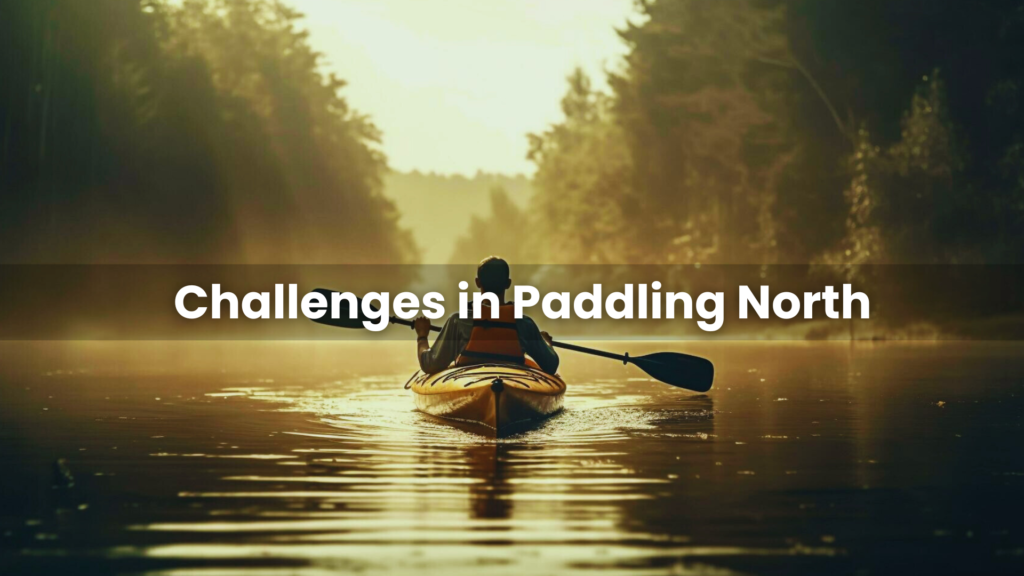
Paddling north is not just a direction; it’s a journey that comes with its own set of challenges, each requiring careful consideration and preparation. The northern waters are often less traveled, and the solitude can be both a blessing and a test of one’s resolve.
Navigating Unpredictable Weather: One of the most significant challenges when paddling north is the unpredictable weather. Sudden storms can arise, bringing strong winds and rough waters. It’s essential to understand how to read the weather and react accordingly, whether it means seeking shelter or adjusting your course to avoid the worst conditions.
Dealing with Cold Water: The further north you go, the colder the water gets. Cold water poses risks such as hypothermia, and it’s crucial to have the right gear, such as a drysuit or wetsuit, to protect yourself against the cold. Knowing the signs of hypothermia and how to deal with it is vital for any northern kayaker.
Overcoming Physical Fatigue: Long-distance paddling, especially in a direction like north that may not have many stopping points, can lead to physical fatigue. Building endurance through training and having a strategy for rest and nutrition during your trip are key to maintaining your strength and stamina.
Wildlife Encounters: The northern wilderness is home to a variety of wildlife, some of which can be curious or even aggressive. Understanding how to handle encounters with animals, from bears to moose, is part of being prepared for the northern paddle.
Solitude and Mental Challenges: The solitude of the northern paddle can be mentally challenging. Being prepared for long periods of isolation, maintaining a positive mindset, and having strategies to cope with the psychological demands of solo travel are important for a successful journey.
Kayaker’s Checklist for Northern Expeditions
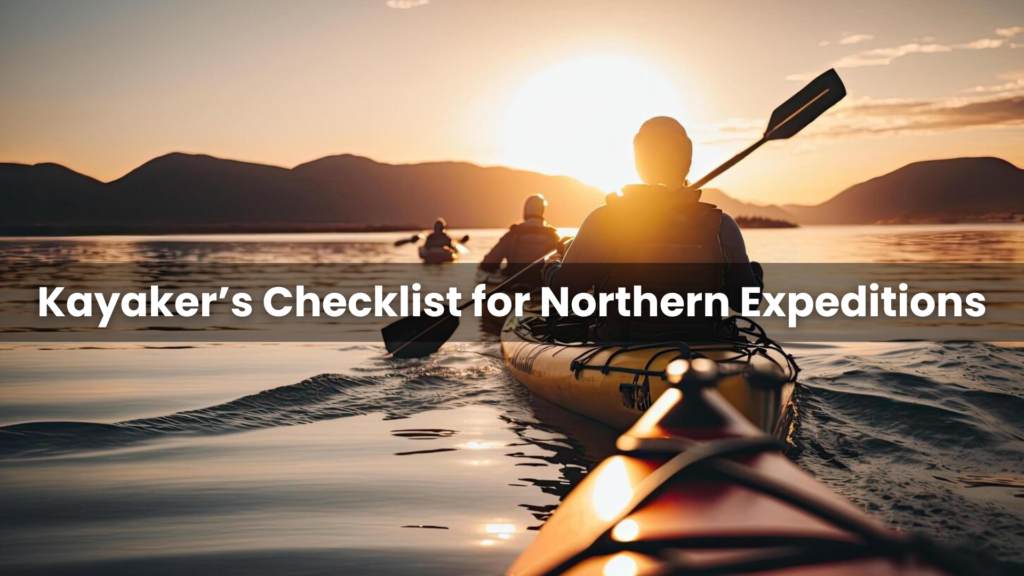
When the call of the north beckons, a kayaker must be prepared for the unique demands of the expedition. The key to a successful and enjoyable journey is thorough preparation, and that starts with a comprehensive checklist. Here’s what you need to ensure you have before you set out to paddle north across the waters.
Essential Kayaking Gear
- Kayak: Choose a kayak suitable for the conditions you’ll encounter. Sea kayaks are ideal for their stability and storage capacity.
- Paddle: A lightweight, durable paddle with a comfortable grip will reduce fatigue on long journeys.
- Personal Flotation Device (PFD): A well-fitted PFD is a non-negotiable safety item.
- Spray Skirt: To keep water out of the kayak in choppy conditions.
- Helmet: Necessary for protection, especially in areas with low-hanging branches or rocky outcrops.
Navigation and Communication
- Compass and Waterproof Map: Essential for maintaining your bearing and route planning.
- GPS Device: A backup for your map and compass, especially useful in low visibility.
- VHF Radio: For emergency communication and weather updates.
- Whistle and Signal Mirror: Simple tools that can be lifesavers in an emergency.
Clothing and Personal Items
Drysuit or Wetsuit: Depending on the water temperature, choose appropriate protection against hypothermia.
- Thermal Layers: To wear under your suit for added warmth.
- Waterproof Jacket and Pants: For protection against wind and rain.
- Sun Protection: Sunglasses, hat, and sunscreen, even in northern climates.
- Footwear: Neoprene boots or water shoes to keep your feet warm and protected.
Safety and Emergency Equipment
- First-Aid Kit: Stocked with supplies tailored to your needs and the trip’s duration.
- Repair Kit: For on-the-spot fixes to your kayak or gear.
- Tow Line: Useful for towing tired kayakers or in rescue situations.
- Bilge Pump and Sponge: To remove water that may enter the kayak.
Food and Hydration
- Water Bottles or Hydration System: Ensure you have enough to stay hydrated throughout the trip.
- High-Energy Snacks: Nuts, energy bars, and dried fruits are great for on-the-go nutrition.
- Meals: Plan and pack meals that are easy to prepare and rich in calories.
Miscellaneous
Dry Bags: To keep your belongings dry and organized.
Headlamp or Flashlight: With extra batteries for when the light fades.
Multi-Tool: Handy for repairs and unexpected needs.
Camera: To capture the beauty of the northern landscapes.
Training and Techniques for Northern Kayaking
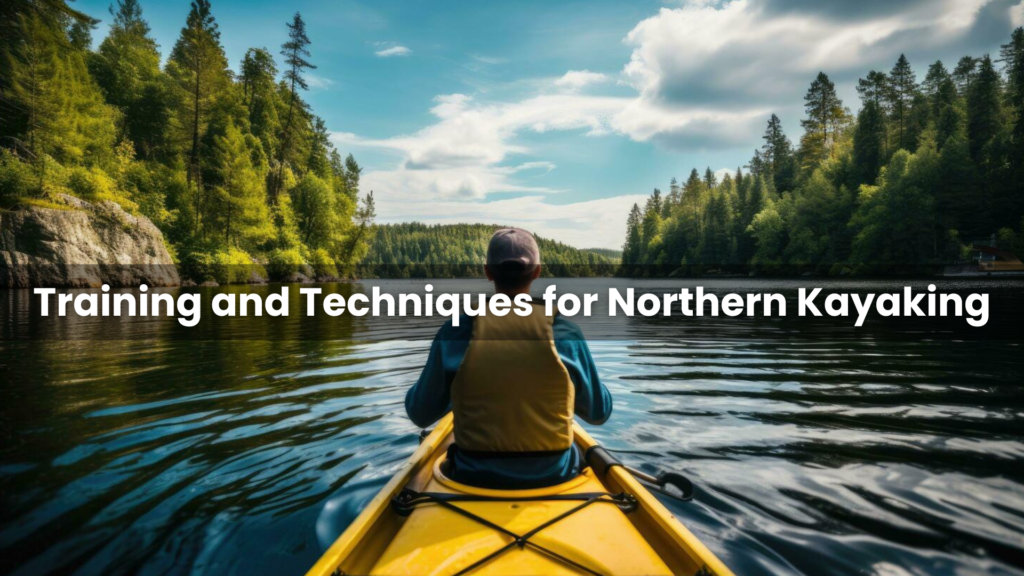
Embarking on a northern kayaking expedition is not just about having the right equipment; it’s also about being physically and mentally prepared. The unique conditions of northern waters require specific training and techniques to ensure a safe and enjoyable experience.
Physical Training for Endurance: The physical demands of paddling across northern waters can be intense. To prepare, focus on building your cardiovascular endurance through activities like swimming, running, or cycling. Strength training, particularly for your core and upper body, will also be beneficial. This will ensure you have the stamina and power needed for long-distance paddling.
Techniques for Efficient Paddling: Efficiency in paddling is key to conserving energy. Practice proper paddling form, focusing on using your torso rotation rather than just your arms. This technique allows you to engage larger muscle groups, reducing fatigue. Learn the art of pacing yourself to maintain a steady rhythm over hours of paddling.
Mental Preparation: The solitude and vastness of the north can be as challenging mentally as they are physically. Develop a strong mental game by practicing mindfulness and visualization techniques. Being mentally prepared will help you stay focused and calm, even when conditions become challenging.
Safety Skills: Safety is paramount in northern kayaking. Ensure you are proficient in self-rescue techniques, such as the Eskimo roll and wet exit. Practice these skills in conditions similar to those you’ll encounter on your journey. Familiarize yourself with emergency procedures and always have a plan B.
Navigation Techniques: In the north, where landmarks may be sparse, honing your navigation skills is crucial. Practice using a compass and reading maps, and consider taking a navigation course if you’re not already confident in your abilities. GPS devices can be helpful, but don’t rely solely on technology.
A Kayaker’s Experience: Stories from the North
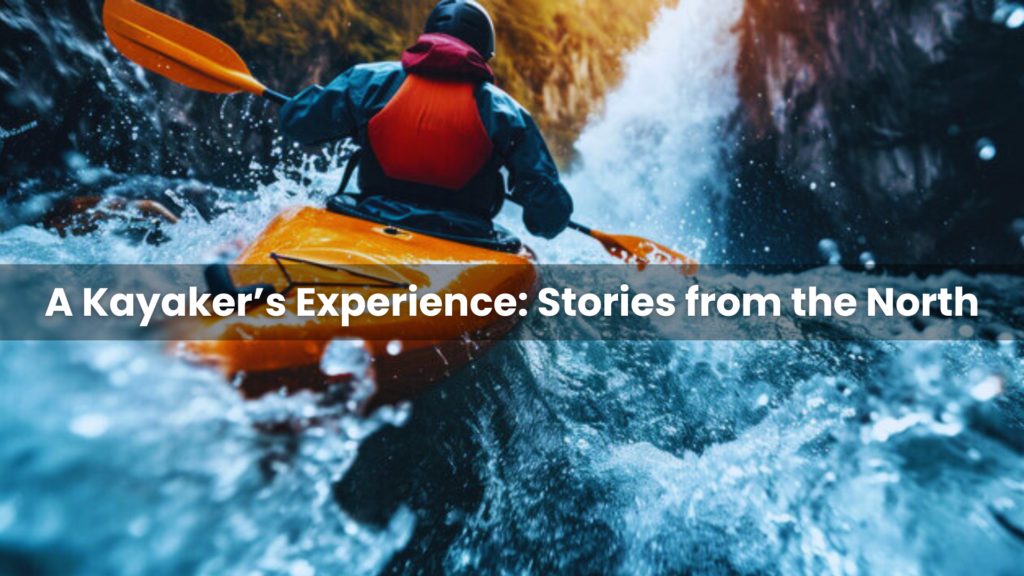
The north has a way of holding a mirror to our inner selves, reflecting back the strength and resilience we sometimes forget we possess. For a kayaker, the northern waters are not just a physical space to traverse but a narrative to be part of, a story to tell and retell. Here, we share the tales of those who have answered the call of the north, paddling across its waters and returning with stories etched into the very fabric of their being.
Solitude of the Northern Waters: Many kayakers speak of the profound solitude they encounter in the north. It’s a silence that speaks volumes, where the only sound is the rhythmic dip and pull of the paddle. In these moments, one realizes the vastness of nature and the small, yet significant place we occupy within it.
Encounters with the Wild: The north is alive with wildlife, and kayakers often recount their encounters with creatures great and small. From the majestic bald eagle soaring overhead to the curious otter peeking from the water’s edge, each meeting is a reminder of the vibrant ecosystem that thrives in these parts.
Dance of Light and Shadow: As the seasons change, so does the light. Kayakers tell of paddling under the midnight sun, where darkness barely touches the horizon, and of the aurora borealis, nature’s own celestial dance. These experiences are not just seen but felt, leaving a lasting impression on the soul.
Triumphs and Trials: Not all stories are of calm waters and serene landscapes. The north can be unforgiving, testing the limits of endurance and skill. Kayakers share tales of battling fierce winds, navigating through ice floes, and overcoming the fear that comes with the unknown. Yet, it’s these very trials that often lead to the greatest triumphs.
Return Journey: Every kayaker who sets out to paddle north across returns with more than they left with. It’s not just about the distance covered or the destination reached; it’s about the journey itself. The stories they bring back are a testament to their journey, a mosaic of moments that capture the essence of northern kayaking.
These stories from the north are more than just accounts of individual experiences; they are a collective narrative of adventure, discovery, and the human spirit. They inspire us to reach beyond our horizons, to paddle north across the waters, and to find our own stories waiting there in the silent, majestic north.
Preserving the Beauty of Northern Waters
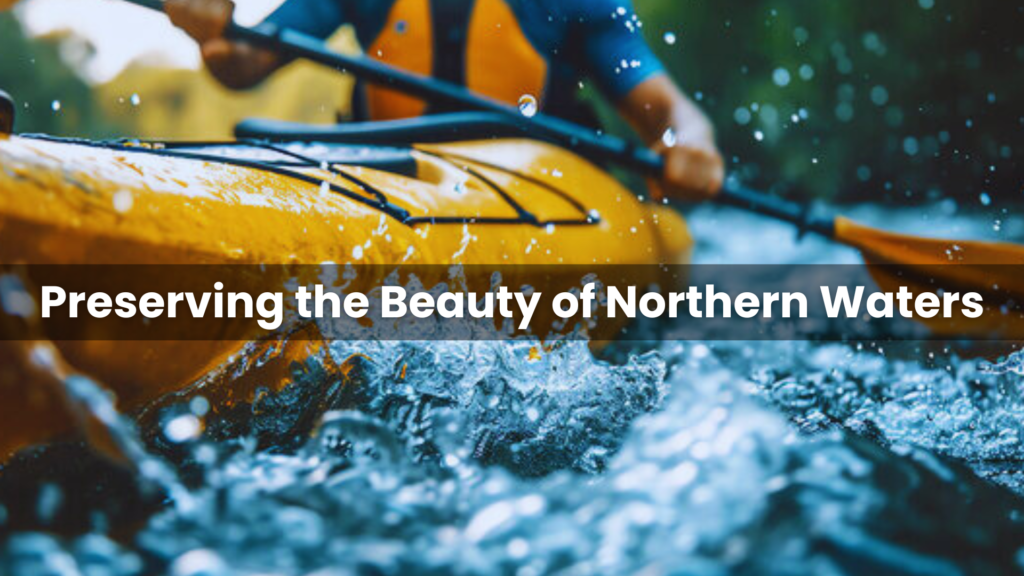
As kayakers, we are privileged to witness the untouched beauty of northern waters, from crystal-clear lakes to flowing rivers that cut through ancient landscapes. But with this privilege comes a responsibility to preserve the pristine nature of these environments for future generations of paddlers and the wildlife that calls these waters home.
Importance of Environmental Stewardship: Environmental stewardship is the practice of protecting and enhancing the natural world around us. As kayakers heading north, we must be mindful of our impact on the ecosystems we traverse. This means adhering to principles that minimize our footprint and ensure that the scenic beauty and ecological integrity of the north remain intact.
Leave No Trace Principles: The Leave No Trace principles are a set of guidelines that offer a framework for outdoor ethics. They are particularly relevant for kayakers who often venture into sensitive and remote areas. These principles include planning ahead and preparing, traveling and camping on durable surfaces, disposing of waste properly, leaving what you find, minimizing campfire impacts, respecting wildlife, and being considerate of other visitors.
Minimizing Your Impact on the Ecosystem: Minimize your impact, use biodegradable products, avoid disturbing wildlife, and stay clear of nesting sites. Paddle during daylight hours to reduce the chance of disrupting nocturnal animals. When camping, use existing sites and avoid creating new ones. Always carry out what you carry in, including all trash and leftover food.
Engaging in Conservation Efforts: Beyond personal actions, engaging in conservation efforts can amplify your impact. Participate in or organize clean-up events, support local conservation initiatives, and educate others about the importance of preserving our northern waters. Advocacy and volunteerism can lead to positive changes and help protect these areas for years to come.
Conclusion
In conclusion, for the adventurous spirit yearning to traverse the untouched wilderness, the phrase A Kayaker Needs to Paddle North Across encapsulates more than a mere direction; it signifies a call to the wild, a testament to the resilience required to navigate the northern waters. It’s a journey that offers not only a test of physical endurance but also an opportunity to connect with nature in its purest form. As kayakers dip their paddles into the crystal-clear waters, they become stewards of the environment, ensuring that the beauty and tranquility of the north remain unspoiled for generations to come. Whether you’re a seasoned paddler or a novice to the sport, paddling north is a transformative experience that beckons with the promise of adventure, solitude, and the profound satisfaction of preserving the natural world.
Most Common FAQS About A Kayaker Needs to Paddle North Across
What should I prepare for when paddling north?
Preparation is key for a successful northern kayaking trip. Ensure you have a reliable kayak, appropriate clothing for cold weather, navigation tools, and safety gear. Also, plan your route carefully, considering the weather patterns and water conditions.
How do I navigate while kayaking in northern waters?
Navigation can be challenging in remote northern areas. Use a compass and detailed maps of the area. GPS devices can be helpful, but always have a manual backup. Be aware of landmarks and changes in the water currents.
What are the best times of year to paddle north?
The best times to paddle north depend on the specific region, but generally, late spring to early fall offers milder weather and longer daylight hours. Always check local climate guides for the most accurate information.
What kind of wildlife might I encounter?
Northern waters are home to a variety of wildlife, including seals, whales, and various bird species. Always observe from a distance and avoid disturbing their natural behaviors.
How do I deal with cold water and weather conditions?
Dress in layers using materials that retain warmth when wet, like wool or synthetic fibers. Always wear a life jacket and consider a drysuit for extra protection. Stay informed about the weather forecast and be prepared for sudden changes.
Are there specific safety concerns when kayaking in the north?
Yes, hypothermia is a risk in cold waters, so proper attire is crucial. Be aware of the signs of hypothermia and have a plan for quick evacuation if necessary. Also, be cautious of strong currents and sudden storms.
How can I minimize my environmental impact while kayaking?
Practice ‘Leave No Trace’ principles, use eco-friendly products, and avoid areas with sensitive wildlife or vegetation. Paddle during daylight hours to reduce the need for campfires and always dispose of waste properly.
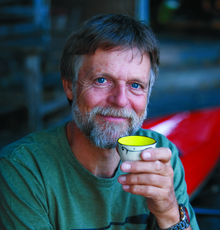
Nigel Foster, born in 1952, is an esteemed sea kayaker, known for being the youngest to kayak around Iceland. His journey in kayaking started at 15 in Brighton, England. With a career beginning as a trainee instructor in Sussex, he later pursued teaching after attending Redland College, Bristol.
Foster’s notable expeditions include navigating the challenging waters of Newfoundland and the Hudson Strait. Despite facing intense conditions, his passion for kayaking never waned. He holds several British Canoe Union qualifications and has significantly contributed to the kayaking community through teaching and committee work.
In 1985, Foster expanded his horizons by assisting an expedition in Iceland and later founded his own kayaking business, sharing his expertise globally.
